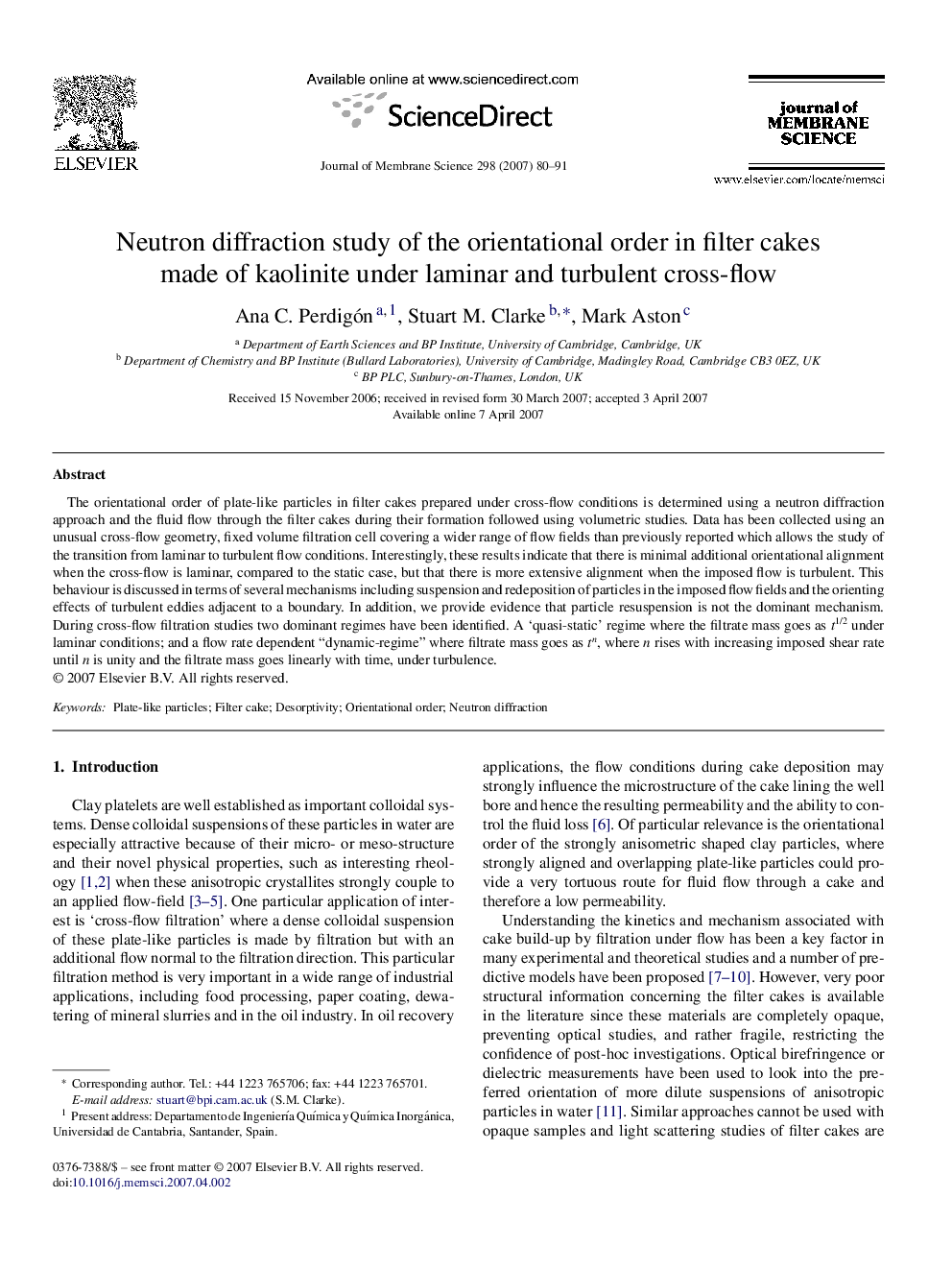| Article ID | Journal | Published Year | Pages | File Type |
|---|---|---|---|---|
| 638624 | Journal of Membrane Science | 2007 | 12 Pages |
Abstract
The orientational order of plate-like particles in filter cakes prepared under cross-flow conditions is determined using a neutron diffraction approach and the fluid flow through the filter cakes during their formation followed using volumetric studies. Data has been collected using an unusual cross-flow geometry, fixed volume filtration cell covering a wider range of flow fields than previously reported which allows the study of the transition from laminar to turbulent flow conditions. Interestingly, these results indicate that there is minimal additional orientational alignment when the cross-flow is laminar, compared to the static case, but that there is more extensive alignment when the imposed flow is turbulent. This behaviour is discussed in terms of several mechanisms including suspension and redeposition of particles in the imposed flow fields and the orienting effects of turbulent eddies adjacent to a boundary. In addition, we provide evidence that particle resuspension is not the dominant mechanism. During cross-flow filtration studies two dominant regimes have been identified. A 'quasi-static' regime where the filtrate mass goes as t1/2 under laminar conditions; and a flow rate dependent “dynamic-regime” where filtrate mass goes as tn, where n rises with increasing imposed shear rate until n is unity and the filtrate mass goes linearly with time, under turbulence.
Related Topics
Physical Sciences and Engineering
Chemical Engineering
Filtration and Separation
Authors
Ana C. Perdigón, Stuart M. Clarke, Mark Aston,
